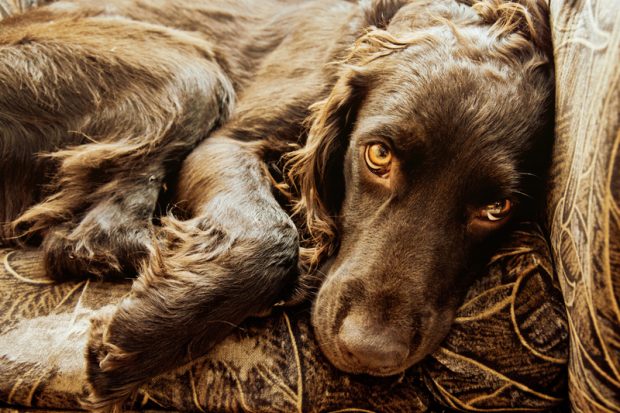
The Wachtelhund (pronounced Valk-tell-hund), aka German Spaniel, has a rich history dating back to the 1880s. You can read more about the breed’s background in an earlier post which is shared below because right now, we want to touch upon the hunting style of a breed that writer, Chad Richardson, described as the “rare breed that can hunt just about anything.”
Richardson wasn’t wrong.
He had been hired by the USDA Wildlife Services program as a biologist to deal with feral pigs on an Army base in Kansas. Already an experienced hunter, Richardson was curious about using a dog to track wild pigs, and in particular, a little known breed, the Wachtelhund. After several false starts of finding a dog, he was finally able to get a German Spaniel from the owner of the first pair of the breed to be registered with the United Kennel Club, Dave Pepe. At the time that Pepe had his second litter, there were only nine Wachtelhunden registered in the United States.
“Rare breed” was not hyperbole.
By way of a background, these dogs were used in their homeland to hunt feather and fur, hoof and bear. But it was some times before anyone in the states knew about them because the breed wasn’t brought here until the 1950s. A few were bred, and then there were seventeen German Spaniels. Fast forward to present times, and as of last year, there are roughly 150 dogs between Canada and the United States. That said, professional hunters and gamekeepers in Germany own nearly all of the remaining Wachtelhunds today, and in most cases, if people don’t hunt, they’ve probably never heard of the breed even if they’re German.
This strong-boned, muscular gundog is a determined, courageous hunter that naturally tends to move in the pattern of an arc when ahead of the hunter. He is not a dog built for speed, but to rummage about in the woods, and he is an especially fine retriever for dealing with dense undergrowth. He hunts with a high nose, and can scent air like a pointer when game is far away, but he will put his nose to the ground to follow foot scent like a hound when the game is close. Unlike a hound, he can be called off a trail to return to his master. This isn’t a pack hunter, but one-on-one dog who will hold a wounded boar or bear at bay, if necessary. Don’t plan on keeping a German Spaniel in a kennel, he won’t do well.
For anyone who has gotten this far and is confused because “Wachtelhund” also refers to the Small Musterlander, our congratulations for knowing your breeds. We also offer a comforting pat on the hand in understanding. The breed we’ve been discussing has a common ancestry with long-haired pointing breeds such as the SM, but the Wachtelhund in this post was selectively bred to track, flush, and retrieve. These are two different breeds!
Image by © Milosz Aniol | Dreamstime.com
